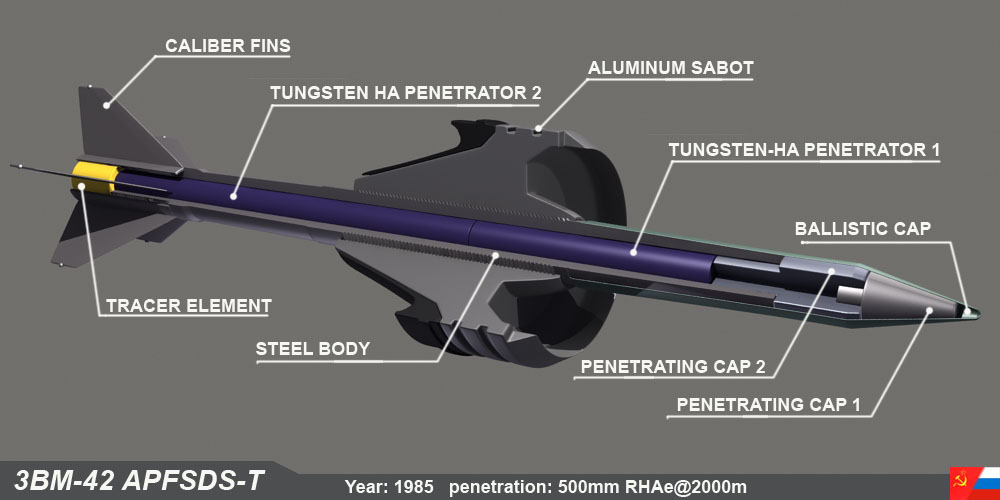T
Törölt tag
Guest
Csak szólok, hogy a 3BM3 torkolati sebessége 1.6km/sec, és még 2km-nél is 1.3km/sec.Tudom,hogy a fűszál is beleáll a fába adott esetben,de ekkora sebessége nem volt a 3BM6-nak.A 3BM6-ba ne azt képzeld bele amit a 80-as évek penetrátoraiba.Ez egy 67-es gránát féligmeddig VH-s technológiájú anyagokkal(többek közt a 400-500 BHN keményégű sapka is vh-s eredetű anyagtechnológi).
De nem kell messzire menni az l/d aránya is vicc kategória volt még a közepesen elavult penetrátorokhoz képest is.
A 3BM6 torkolatnál majdnem 1.7km/sec
Rendet is vágott az iráni Chieftain-ek között:
Despite lacking any heavy metal component whatsoever, 3BM6 was already enough to defeat the Chieftain at typical combat distances. According to a Soviet analysis of an Iranian Chieftain captured by the Iraqi army during the early part of the Iran-Iraq war, available here on Andrei Tarasenko's website, btvt.info, the upper glacis and frontal turret armour of the Chieftain Mk. 5 could be defeated at a distance of 1,600 meters. The frontal cheeks of the turret could be pierced at 1,600 m, and the base of the turret could be pierced at 2,300 m. The upper front plate, an 85mm cast armour plate sloped at 70 degrees, could be defeated at 1,600 m, while the lower front plate could be defeated at more than 3 km. The table says 3 kilometers, since they did not bother to conduct testing past that distance but the velocity limit is listed as 1,000 m/s which corresponds to a distance of 5 km. Needless to say, these are excellent results, especially considering that it is achieved without the use of any tungsten at all in the construction of the projectile.









